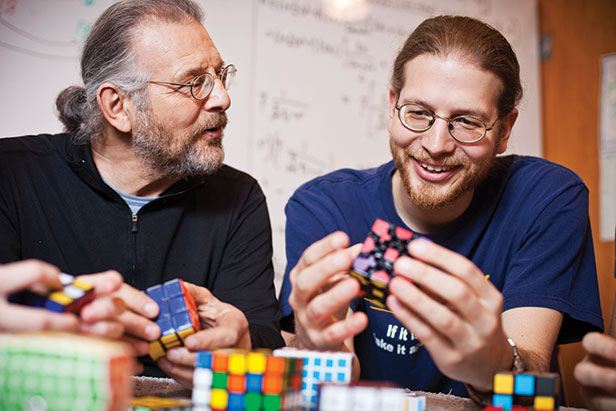In 2010, an international team of researchers proved that no matter how scrambled a Rubik’s cube got, it would require no more than 20 moves to solve it. Their proof, however, relied on the equivalent of 35 years’ worth of number crunching on a good modern computer.
For cubes bigger than the standard Rubik’s cube, adequately canvassing starting positions may well be beyond the computational capacity of all the computers in the world. But in September, Erik Demaine (right), an associate professor of computer science and engineering, led a team including his father, CSAIL visiting professor Martin Demaine (left), that demonstrated the mathematical relationship between the number of squares in a cube and the number of moves in the shortest solution to its most scrambled state.
The standard way to solve a Rubik’s cube is to find a square that’s out of position and move it into place while leaving the rest of the cube as little changed as possible. That yields a worst-case solution whose number of moves is proportional to N2, where N is the number of squares per row. But the team saw that under some circumstances, a single sequence of twists could move multiple squares into place.
Don’t settle for half the story.
Get paywall-free access to technology news for the here and now.
